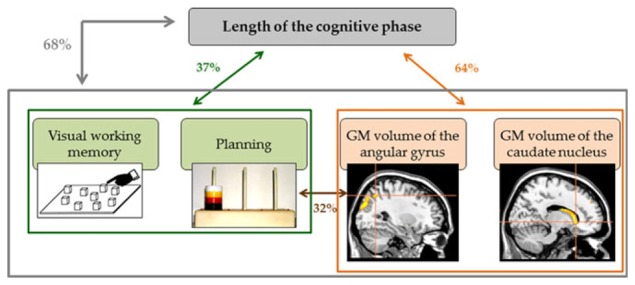Fig. 4.

Summary of the correlations between neuropsychological scores and brain structural substrates of cognitive procedural learning in alcoholic patients. Both visual working memory and planning (in green) and gray matter (GM) volumes of the angular gyrus and caudate nucleus (in orange) predicted the length of the cognitive phase, accounting for 37 and 64% of the variance, respectively. Planning abilities were related to the volume of the angular gyrus (32%). When all the neuropsychological and brain structural predictors were included in a single regression analysis, they explained 68%of the length of the cognitive phase (in gray).
